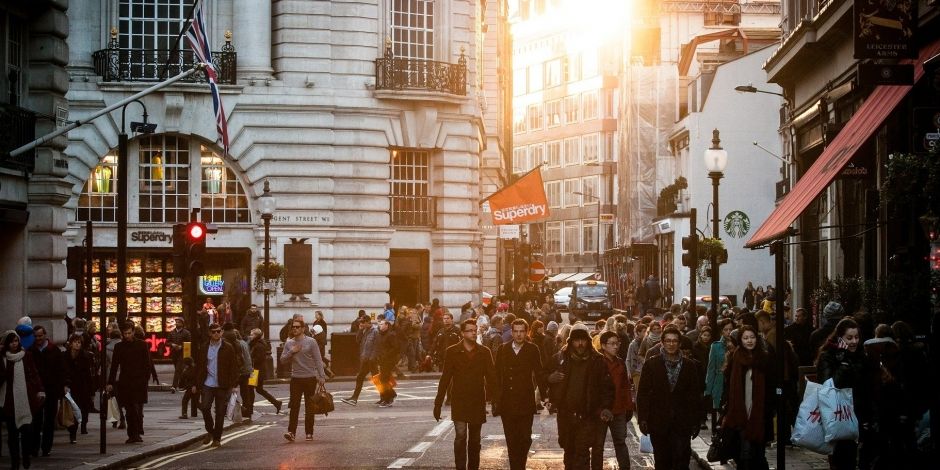
Janus Henderson Investors: E-commerce continues to disrupt retail real estate
As physical retail spaces like shopping malls lose relevance, they are often replaced by warehouses and distribution centres that support the growing e-commerce model.
28.11.2019 | 15:38 Uhr
Janus Henderson’s Global Property Equities Team believes this trend is causing disruption and creating opportunities within the real estate sector.
Key Takeaways
- Online retail sales have grown exponentially in recent years, putting pressure on the physical retail real estate sector, a trend that is expected to continue
- The team believes the real estate sector is in the early phase of a transition that could generate increased demand for industrial logistics real estate
- As this transition unfolds, the team believes it is important to be selective in identifying companies that can adapt their offering and continue to thrive
View Transcript
Tim Gibson: Disruption is a key word in today’s economy. It’s impacting all aspects of people’s lives and is even impacting the real estate sector, which has historically been seen as quite an old-school, sleepy sector. The most obvious real estate sector to be impacted is retail; this is through the rise of e-commerce. Online retail sales have grown exponentially in recent years and now make up more than 20% of retail sales in some major economies.1 We expect this trend and these growth rates to continue in coming years.
Guy Barnard: Now, this is putting tremendous pressure on physical retail landlords. As retailers are facing pressures themselves, they are, in some cases, going insolvent. We’re seeing an increase in the levels of bankruptcies. We’re seeing other retailers downsize their physical store footprints. And in many markets as well, people simply say, “We cannot afford to pay the current level of rent.” So, you know, this is a very negative backdrop for retail, for shopping malls.
Greg Kuhl: What we are seeing, what we expect to see continue, is store footprints are going to continue to shrink. And if we look at a new prototype for a store that is existing in 2019 and beyond, we think stores today that are going to open are going to be 10, maybe 20,000 square feet at the high end. No longer are we going to see very many stores opening that are 30, 40, 50,000 square feet or larger. What is happening is that inventory is going to begin residing increasingly in warehouses, rather than in physical stores, to facilitate the expectation of two-day delivery or faster to people’s homes. Inventory should shift from retail stores to warehouses, creating increased demand for warehouses.
If we look forward 10 to 15 years from today, we expect industrial logistics warehouse space to represent a larger market cap than retail real estate. We are still far away from that, but that is a transition that we think will take place over multiple years.
Guy Barnard: There is actually one shopping mall in the US that really epitomises this trend most clearly. It’s the Rolling Acres Mall in Akron, Ohio. This mall opened in the 1970s and, at one point, it was the largest mall in the world. It went through a period of structural decline and ultimately shut several years ago. Now, ironically, in the last two years, Amazon has demolished part of that mall to build a distribution centre.
Now, we’re not saying that every shopping mall around the world is going to suffer the same fate, and the US is in a fairly unique situation with five times more retail space per capita than most other parts of the world. However, even for the best malls and the best operators in other parts of the world, we think it’s going to be a very challenging backdrop to grow rents over the next few years.
Tim Gibson: Indeed, in Asia we still have some very positive underlying trends in countries, for example, like the Philippines. There, you’ll find a young and growing population where mobile phone penetration, for example, is only around 70%, one of the lowest in the world.2
As well as that, some high-end products really should only be bought in malls and in physical stores. You want to make sure that the watch on your arm or the handbag that you buy is actually the real thing. And it’s not just high-end products; it’s also lower-value items, such as cosmetics. You want to make sure that what you’re putting on your face is what it says on the tube. So not everything will be able to be bought online, and as we move through the (property) cycle, it will be those who are able to adapt their offering that will continue to survive and, indeed, to thrive. So the key point here is really to be selective, and, as active managers, this is clearly in the area where we feel we can continue to add value.
1Source: eMarketer, Prologis, as at February 2019.
2Source: Pew Research Center; Mobile Connectivity in emerging economies, 7 March 2019.




Diesen Beitrag teilen: